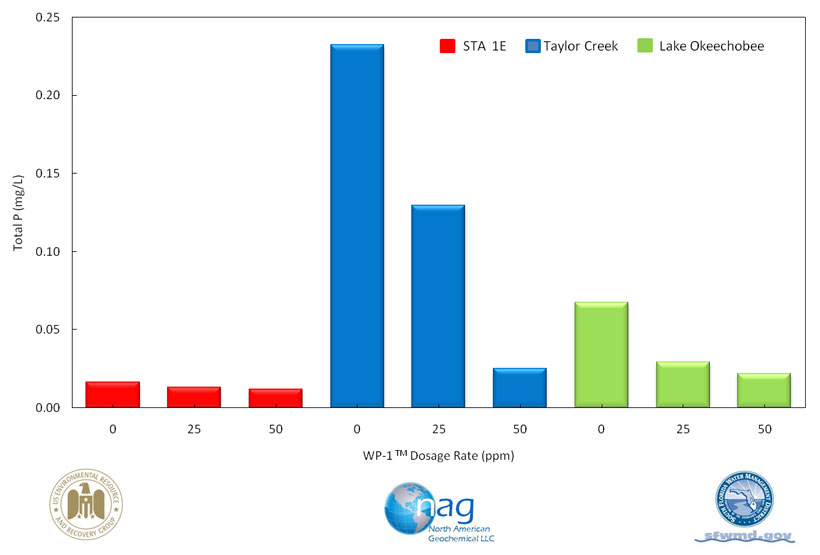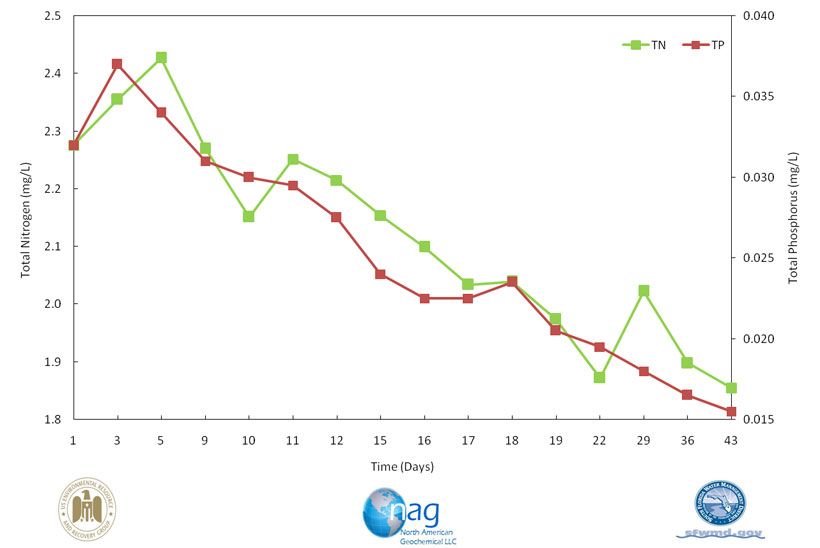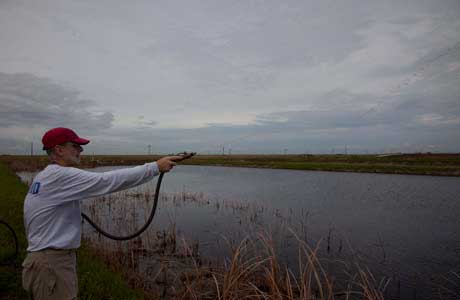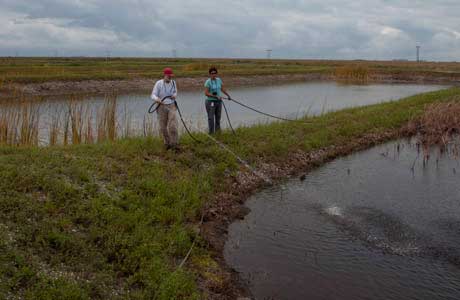South Florida Water Management District (SFWMD) West Palm Beach, FL

Problem Nutrient enrichment (N & P) of aquatic ecosystems is a global problem strongly linked to the development of eutrophication, potentially toxic blue-green algae blooms and associated low dissolved oxygen (DO), fish kills and general reductions in overall water quality. Most commonly originating from agricultural runoff and municipal/industrial point sources, eutrophication is particularly significant in the sensitive environments managed by the South Florida Water Management District (SFWMD) e.g. “The Everglades” and Lake Okeechobee. Reduction of nutrient inputs entering these environments and treatment of legacy nutrients already present in the system is paramount to ensuring the regions sustainability.
Solution NAG in collaboration with scientists and engineers from the SFWMD initiated laboratory and field testing of NAG’s proprietary phosphate removal technology (WP-1™). Batch adsorption test were conducted on water samples collected from three different locations (Lake Okeechobee, Taylor Creek North and a Stormwater Treatment Area (STA) contaminated with varying levels of N and P. Additionally, WP-1™ was applied, in the field, to the SFWMD STA experimental test cell facility. The objective of these studies was to quantify the ability of WP-1™ to remove P and N from the natural waters of the SFWMD, with a view to developing a strategy for commercial implementation. The results of this testing are summarized below.
Results Additions of WP-1™ resulted in significant reductions in TP in all treatment sites waters within a relatively short 24 hr reaction time (Figure 1). Removal efficiencies were 27%, 89% and 68% for STA 1E, Taylor Creek and Lake Okeechobee, respectively using a dosage rate of 50ppm. Analysis of the treated water for a suite of salts and metal ions was undertaken to investigate the potential release of additional pollutants to the water during the adsorption process. Results indicate that for the elements investigated including nitrate, sulfate, calcium, magnesium, potassium, iron, aluminum none were released by WP-1™ that would hinder field applications. On the contrary, metal ions iron and aluminum were shown to decrease in concentration, which indicates the ability of WP-1 ™ to simultaneously remove P and other potentially harmful contaminates to extremely low concentrations. The results of the 43 day field trial (Figure 2) indicate that WP-1™ (dosage rate = 0.021 mg/L) reduced both TN and TP from initial concentrations of 2.347 mg/L TN and 0.034 mg/L TP by 21.4% and 54.9%, respectively. Final equilibrium TN and TP concentrations were 1.845 mg/L TN and 0.016 mg/L TP. Moreover, WP-1™ was shown to simultaneously reduce the concentrations of several trace elements/ ions including iron (51.7%) and sulfate (21.4%).

Removal of TP from various SFWMD water sources by WP-1™. (WP-1™ dosage – 25 and 50ppm, reaction time = 24h).

Removal of TN and TP in SFWMD STA Test Cell #4 by WP-1™ phosphate adsorbent technology. Treatment Notes: STA Volume = 3,179,925 L (840,139 gallons); Day 1, 3, 5 are background control values. Dosage = 6.804 kg (15 lbs) of WP-1™ reagent was applied on Day 8, 9, 10, 11, 14, 15, 16, 17 and 18; 6.804 kg WP-1 = 0.00214 g/L; Sampling occurred 24h after WP-1™ application.

